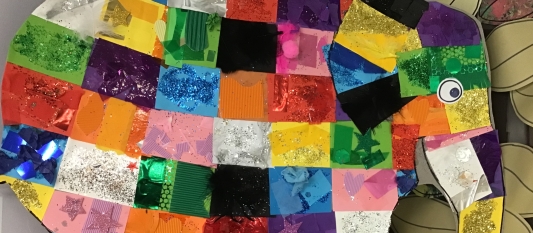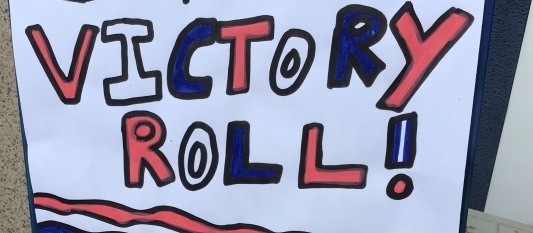
In this section:
Latest News



Phonics & Early Reading
Phonics
At Whitwick St John the Baptist, we use 'Supersonic Phonic Friends' as our systematic synthetics phonics program (SSP). To find out more about the Government approved Phonics Programme please visit 'Supersonic Phonic Friends'
Pre-School:
As part of our pre-school curriculum, children begin the foundations of their communication, language and literacy skill from the teaching of Phase 1. Phase 1 is incredibly important and creates the basis for their phonics learning. This phase includes vital skills needed to listen and gain awareness of different sounds through seven different aspects. Phase 1 is arranged under the following seven aspects:
- Aspect 1: General sound discrimination- hearing sounds within their environment
- Aspect 2: General sound discrimination- hearing instrumental sounds and promote speaking and listening, using musical instruments
- Aspect 3: General sound discrimination- body percussion, use of multi- sensory experiences such as using body parts to make sounds ie. clapping, stamping.
- Aspect 4: Rhythm and rhyme
- Aspect 5: Alliteration- repetition of the same sound or letter at the beginning of most of the words in a sentence
- Aspect 6: Voice sounds- the use of sound affects to accompany play or the use of their senses
- Aspect 7: Oral blending and segmenting- children begin to hear the initial sounds of words and tuning into sounds
This vital phase is where children begin their skills of listening and awareness of different sounds, the range of aspects enhance their ability to listen carefully and talk extensively about what they hear, see and do.

Foundation Stage:
When transitioning into Foundation Stage, children are exposed to Basics 2, which marks the start of systematic phonics work. It begins the introduction of grapheme and phoneme correspondences, whereby, oral blending and segmenting of words, transforms to blending and segmenting most letters in the alphabet. As soon as the first few correspondences have been learnt, children are taught to blend and segment with in them. Whilst in Foundation Stage, children continue to be assessed regularly, this form of assessment will allow intervention groups to be formed immediately to tighten any gaps. By the end of the phase, children will be reading CVC words, whilst being introduced to two-syllable words and simple captions. Basics 3, completes the teaching of the alphabet, and children move on to learning another 25 grapheme sounds represented by more than one letter, this is called a digraph. Children continue to segment and blend to read words and captions. Children progress on to learning common exception words and also begin to spell some of these words.
When entering Basics 4, children are taught to further manipulate the phonemes and graphemes they have already learnt. The main aim of this phase is to consolidate the children's knowledge and to help them learn to read and spell words which have adjacent consonants, such as trap, string and milk. They will be able to blend phonemes to read CCVC (consonant-consonant-vowel-consonant) words/CVCC words and segment in order to spell them. Children will also have begun reading straightforward two-syllable words and simple captions, as well as reading and spelling some tricky words and no new grapheme-phoneme correspondences are taught in this phase.
By the end of Foundation Stage, it is our intention that all children will leave being secure at phase 4.

Year 1:
At the beginning of Year 1, children will begin on The Higher Levels 5. Alongside the teaching of Level 5, children will be regularly assessed using Phonics Tracker on their phoneme recognition from Foundation stage. Results from these assessments inform teachers as to which children need additional support in the form of phonic interventions.
Children will then begin to broaden their knowledge of graphemes and phonemes for use in reading and spelling as they move through Level 5. This Higher Level 5 teaches children that there is more than one spelling for the same sound (Choose to Use) and then moves onto the concept of the same grapheme having alternative sounds such as ea in tea, head and break (Switch it Mitch). Children use these sounds to read real and pseudo words (not real words). At the end of year 1 children are assessed using the ‘Phonics Screening Check’. The purpose of the phonics screening check is to confirm that they have learnt phonic decoding to an age-appropriate standard.
With continued teaching and application of segmenting and blending graphemes children will become fluent readers ready for transition into year 2.

Year 2:
At the beginning of Year 2, children will continue to be assessed through Phonics Tracker on their phoneme recognition from Foundation Stage and Year 1. We spend the initial weeks covering The higher levels 5 phonemes again to ensure that children have recalled these from the end of the following year. Any children who did not meet the Phonics Check standard or have not been able to recall the previous year’s phonemes will be provided with additional support to ensure accelerated progress is made.
We then teach grammatical rules for the spellings following the spelling programme of study from the English National Curriculum for Year 2.
At the end of the year, those children who did not achieve the ‘Phonics Screening Check’ standard, re-take the phonics check again and results are again reported to parents.
Key Stage 2 (Years 3-6):
Children who did not meet the ‘Phonic Screening Check’ standard in Year 2 will receive targeted support as they progress through the school.
Early Reading (decoding) - Books
Children will be taught to apply their phonics by decoding in order to read books. Parents are invited to sessions to support them with each stage in their children’s phonics learning so that they can help them to read at home.
In addition to the reading books mentioned below, all children will be able to borrow a library book of their choice (supported by the class teacher) to support their development of ‘Reading for Pleasure’. All classes have class books and are read to regularly. High quality and diverse texts and passages are chosen, appropriate to the expectations of the year group
Foundation Stage:
In Foundation Stage, children will initially bring home books with no words. This enables children to practise discussing the book with parents, without needing to decode words. Alongside a picture book, children will bring home a decodable phonics book (linked to the sounds that the children have been taught) and a book banded book matched to their reading attainment. It is important that children re-read the book throughout the week at home because this enables them to become more fluent as they begin to recognise the words without needing to decode and also will ensure they feel successful.
Year 1:
Children will continue to read decodable books (phonics book) in Year 1. Again, these will be sounds that your child is already secure with. Children may bring home a book with sounds that they previously learnt and are yet not fully secure with. Children will read in a small guided group alongside individual reading where necessary. During the Spring Term, reading lessons will begin to incorporate comprehension skills using the VIPERS approach to teaching reading: Vocabulary, Inference, Prediction, Explain, Retrieve and Summarise.
Year 2:
Children in Year 2 who are secure with their phonics will be provided with two book banded books matched to their current attainment. When ready, they will move away from banded books and become a ‘Free Reader’ where they will have increased choice of books, supported by the class teacher. If children are not secure with the phonic phases previously learnt, they will continue to access decodable books until they are secure alongside the additional classroom support. Children in Year 2 will build upon the early comprehension skills set down in Year 1 using the VIPERs approach. Rising Stars ‘Cracking Comprehension’ is used alongside a range of other resources.
Key Stage 2 (Years 3-6):
Upper and Lower KS2 will continue developing their reading skills using the VIPERS approach. Cracking Comprehension is used throughout KS2 alongside other resources. All classes have a class book and are regularly read to by an adult. Sometimes these texts form the basis of the reading lesson. Where needed, children in Year 3 and above will continue on book banded books until they are fluent and confident readers. Each Key Stage 2 classroom has an age-appropriate classroom library that they can select their reading book from and also have access to the school library.
Contact us
Mrs Noon (Headteacher)
Whitwick St John the Baptist
Parsonwood Hill
Whitwick
Leicestershire
LE67 5AT
Tel: 01530 832116
Email: whitwick@whitwickce.leics.sch.uk
Home | Privacy Policy & Cookies | Site map | Admin
© 2013 - 2025 Whitwick St John the Baptist. All rights reserved.


